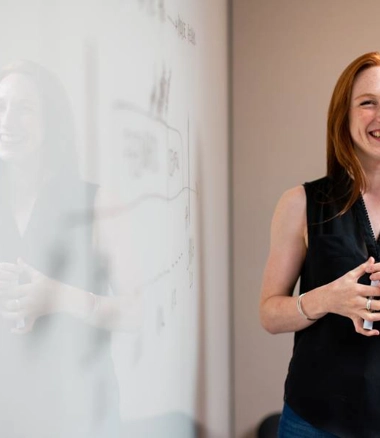
You polish your CV.
You apply for roles you're more than qualified for.
And still — silence.
No call.
No feedback.
No second chance to prove yourself.
If you're a mid to senior-level professional in engineering, architecture, construction, sustainability, or property development today, you're not alone.
Australia’s 2025 job market looks strong on the surface — but beneath it, competition, complexity, and shifting hiring priorities are creating invisible barriers for capable people.
The truth is, getting overlooked isn't just about missing keywords or formatting errors.
It's about how your story, your brand, and your future potential are perceived — often in under 10 seconds.
Here’s why even the right experience isn’t enough anymore — and what you can do about it.
1. You’re Competing in a Saturated Market Where Good Isn't Enough
Australia now has over 545,000 qualified engineers (Engineers Australia Statistical Snapshot) — but fewer than 243,000 work directly in engineering roles.
Each month, around 6,300 engineering vacancies are advertised nationwide (Australia Engineering Labour Market Overview) — meaning the gap between qualified talent and available roles is stark.
Even strong candidates can look invisible when:
- Your achievements blend into every other CV.
- You describe your experience the same way as your competitors.
- You assume qualifications alone guarantee attention.
In today's saturated market, you don’t just need the right experience — you need a sharp, distinctive professional narrative.
Micro-example:
A civil engineer with eight years’ experience applied for 40 roles. Feedback finally revealed: he sounded “competent but generic” compared to peers with clearer leadership and project impact stories.
Reflection Question:
If a hiring manager read just the first half of my CV, would they feel they’ve found someone different — or more of the same?
2. Hiring Managers Are Prioritising Future Potential, Not Past Performance
Organisations are no longer hiring for the job today.
They’re hiring for the capabilities they’ll need tomorrow: digital skills, cross-sector agility, ESG leadership.
According to McKinsey, 81% of global employers now prioritise “future potential” over “past technical achievements” (McKinsey Future of Work).
Yet most candidates still pitch themselves on yesterday’s wins.
If you don't show where you're evolving — and how you’ll drive future value — you’ll be quietly passed over for someone who does.
Micro-example:
A senior project manager lost out to a competitor with less direct experience, but stronger credentials in digital project delivery — exactly where the employer was headed.
Reflection Question:
Does my application prove I’m ready for their future — or simply comfortable in the past?
3. Your Profile Tells a List of Jobs — Not a Story of Growth
Recruiters spend 6–8 seconds on the first scan of a CV (Seek).
In those seconds, they're looking for:
- Evidence of increasing responsibility.
- Signs of leadership, not just technical execution.
- Impact on business outcomes — not just tasks completed.
A string of projects and roles without clear progression reads as career drift, not career momentum.
Micro-example:
An environmental engineer’s CV listed eight projects but never framed how her role expanded, what she led, or what was achieved beyond delivery.
Reflection Question:
Would a stranger reading my CV see the upward curve of my career — or just a list of past employers?
4. ATS and AI Filters Are Deleting You Before Humans Can See You
In 2025, over 80% of large Australian employers filter CVs through Applicant Tracking Systems (Elite Collective).
Only 1 in 4 resumes make it to human review (Seek).
You're not just competing against other people.
You’re competing against algorithms optimised for keyword matching, formatting clarity, and measurable alignment.
Strong experience that isn’t properly framed can be deleted before anyone sees your name.
Reflection Question:
Is my application speaking clearly to both algorithms and people — or getting stuck in the middle?
5. Your Digital Presence Doesn't Build Confidence
LinkedIn isn't optional.
Today, 96% of recruiters use LinkedIn to vet candidates (LinkedIn Hiring Statistics).
A stagnant profile, inconsistent job history, or lack of visible thought leadership raises doubts — even if your CV is strong.
An invisible or weak online presence makes it harder for decision-makers to feel confident recommending you.
Micro-example:
An architecture associate was shortlisted — then dropped — because her LinkedIn profile hadn't been updated in four years, signalling disengagement from the industry.
Reflection Question:
If a hiring manager checked my LinkedIn profile right now, would it reinforce my professional credibility — or weaken it?
6. You're Focused on What You Want — Not on What They Need
Jobseekers often (understandably) frame their applications around personal goals: better pay, better projects, more balance.
But employers hire people who solve problems.
Not people seeking personal upgrades.
Your narrative must focus first on how you’ll deliver commercial, operational, or creative outcomes — not what you hope to get.
Reflection Question:
Am I positioning myself as a solution to their most urgent needs — or as another candidate hoping for a better deal?
Your Strategic Checklist for 2025 Success
|
Challenge |
Risk |
Strategic Action |
|
Market Saturation |
Blending into the crowd |
Build a sharp, distinctive career story |
|
Future-Fit Hiring |
Seen as “yesterday’s candidate” |
Show adaptability, digital skills, and forward thinking |
|
Narrative Gaps |
No leadership or growth arc |
Frame increasing responsibility and impact |
|
ATS Filters |
Deleted before human review |
Optimise formatting, keywords, clarity |
|
Weak Digital Presence |
Lack of trust or engagement |
Curate a strong, active LinkedIn presence |
|
Self-Focused Framing |
Seen as a risk, not a solution |
Lead with business value, not personal ambition |
A Clearer Path Forward
Finding yourself overlooked despite strong experience is frustrating.
But it’s not permanent.
And it’s not a judgement on your talent.
In today's market, the professionals who succeed are not always the most qualified — but the most intentional about how they present themselves to the opportunities they want.
Here are some clear, practical observations to help you move forward:
- Shape your professional narrative — don't just list your history.
Hiring managers hire future impact, not past activity.
Frame your next application around what you build, solve, or lead, not just what you’ve worked on. - Align yourself with tomorrow’s needs — not yesterday’s roles.
Every sector is shifting.
Whether it's digital delivery, sustainability, client leadership, or project efficiency — speak to where your industry is heading, not just where it's been. - Be brutally clear about your value — fast.
In 6–8 seconds, a hiring manager should understand exactly why you are the best choice.
Lead with impact, outcomes, and leadership — not with job titles or responsibilities. - Manage your professional brand intentionally.
Your CV, LinkedIn, references, and even how you interview should tell a unified story of progression, leadership, and future readiness.
No weak links. - Think beyond applying — start positioning.
Many of the best roles aren't advertised.
Networking, visible expertise, and strategic conversations are now essential parts of the job search — not optional extras. - Take ownership of your own career momentum.
Waiting to be recognised, waiting for the right ad to appear, waiting for others to “see” your potential — these are old strategies.
In today's market, visibility, clarity, and relevance are proactive, not passive, choices.
One Final Thought
Your experience still matters.
But how you translate it — how you package, position, and present yourself — matters just as much now.
The next opportunity you want won't come because you hope harder.
It will come because you show clearly and convincingly that you are already ready for it.





